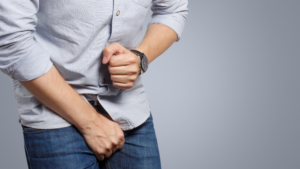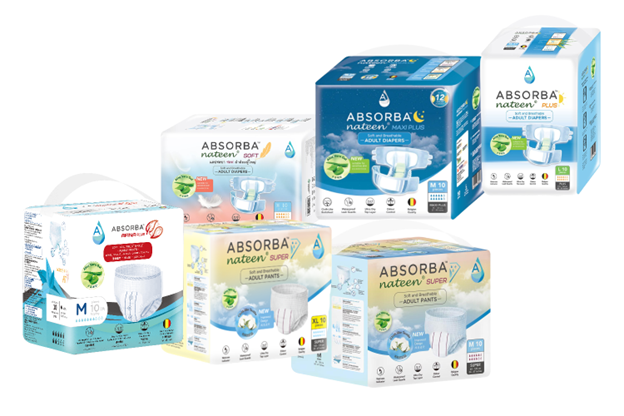

Urinary incontinence is a common and often embarrassing problem that affects millions of people. Although the different types of incontinence are prevalent, many people remain unaware of them and how to treat them. In this article, we will discuss the four main types of urinary incontinence: stress incontinence, urge incontinence, mixed incontinence, and overflow incontinence. Understanding the different types of incontinence is an important step in finding the right treatment and regaining control over your bladder.
Understanding the Different Types of Urinary Incontinence
Stress incontinence
Stress incontinence characterizes the involuntary leakage of urine during physical activities such as coughing, sneezing, laughing, or exercising and is a common type of urinary incontinence. This occurs when the muscles and tissues responsible for controlling the release of urine become weakened or damaged. The pressure put on the bladder during these activities causes the urine to leak out, leading to embarrassment and discomfort.
Furthermore, stress incontinence is a type of urinary incontinence that occurs when physical activities, such as coughing, sneezing, laughing, or exercising, result in the leakage of urine.Women who have experienced childbirth, menopause, or pelvic surgery, as well as men who have had prostate surgery or have an enlarged prostate, commonly experience stress incontinence.
Treatment options may include pelvic floor muscle exercises, bladder retraining, and lifestyle changes such as weight loss and avoiding bladder irritants. Healthcare providers may recommend medications or surgery in more severe cases of stress incontinence. Effective management and the restoration of quality of life can be achieved with the appropriate treatment plan.
Urge incontinence
Urge incontinence, also known as overactive bladder syndrome, is a condition in which a person experiences a sudden and strong urge to urinate, followed by an involuntary loss of urine.
This type of incontinence is often characterized by a persistent need to urinate, even when only a small amount of urine is expelled. This can be a very uncomfortable experience that affects daily life and can lead to feelings of frustration and embarrassment. The constant urge to urinate can also cause sleep disturbances and make it difficult to focus on other activities.
This is a common issue that affects many individuals and can lead to a significant decrease in quality of life. It is important to understand the causes and seek proper medical attention to alleviate the symptoms and improve overall bladder control.
Urge incontinence can be caused by a variety of factors, including neurological conditions, urinary tract infections, bladder irritants, and certain medications. It is also common in older adults, especially in women. Treatment options for urge incontinence include pelvic muscle exercises, bladder retraining, and medications to calm overactive bladder muscles.
In some cases, surgical intervention may be necessary. With the right treatment plan, urge incontinence can be managed and its impact on daily life can be reduced.
Overflow incontinence
Overflow incontinence is a type of urinary incontinence that occurs when the bladder is not able to completely empty, resulting in a steady or constant leakage of urine. This type of incontinence is more common in older individuals and can be caused by various factors such as an enlarged prostate, nerve damage, or weak bladder muscles.
The muscles that control holding urine in the bladder, called the detrusor muscles, might not work properly. This can also occur if there is something blocking the urinary tract, making it difficult to empty the bladder completely. As a result, small amounts of urine may leak out throughout the day.
Overflow incontinence is a type of incontinence that occurs more often in older people. It can be caused by things like an enlarged prostate, nerve damage, or weak bladder muscles. It can also be a side effect of certain medications, such as those used to treat high blood pressure or depression.
Treating overflow incontinence involves identifying and addressing the root cause of the issue. To treat overflow incontinence, you need to figure out what is causing it. Depending on the specific situation, different approaches may be recommended.
Lifestyle changes, such as timed voiding and pelvic floor muscle exercises, or medical interventions. Different ways to treat it might include making changes to your daily routine. In some cases, you might also need medicine or an operation. Your doctor will help you figure out the best plan for you.
Functional Incontinence
Functional incontinence is a common problem that can affect individuals in many ways. These limitations can have a significant impact on an individual’s daily life and overall well-being.
For example, physical limitations, such as difficulty walking or mobility issues, can make it difficult for an individual to reach the bathroom in time. Similarly, mental limitations, such as memory problems or confusion, can also cause incontinence. As mental limitations like having trouble remembering things or becoming confused can also lead to incontinence.
When this happens, the person may forget to go to the toilet or become confused and not be able to find the toilet can lead to feelings of frustration, embarrassment, and decreased self-esteem. Physical problems, like finding it hard to walk or move around, can stop someone from reaching the toilet in time.
The underlying cause of functional incontinence can be due to various factors, including aging, disabilities, neurological conditions, or medications. It is a common problem and can greatly impact an individual’s quality of life, leading to embarrassment, anxiety, and increased risk of skin infections and urinary tract infections.
Effective management strategies for functional incontinence include modifying the physical environment, providing assistive devices, and addressing any underlying medical conditions.
Making a change in Incontinence Care
In Singapore, adult diaper pants with high absorbency have become a popular solution for those dealing with incontinence or mobility issues, offering a discreet and comfortable way to manage their needs.
Adult diapers or adult diaper pants are designed with materials that can absorb urine to prevent leaks. It’s crucial to consult with a doctor to figure out the most suitable treatment plan. The solution could range from simple changes in lifestyle and diet to medical intervention.
Wearing adult diapers can provide a sense of security and dignity to those who have difficulties controlling their bladder. These products, including pads and liners, can assist individuals with incontinence to continue their daily routines and maintain their independence.
If you are searching for the best diapers in Singapore, please contact us for any enquiries regarding our adult diapers or incontinence products.


